Vermont’s wilderness offers more than just scenic views—it’s a hiker’s paradise. With over 400,000 acres of untouched forests, alpine ridges, and cascading waterfalls, every trail tells a story. I’ve wandered through dense maple groves, scrambled up rugged peaks, and stumbled upon hidden gems like Peacham Bog. The Green Mountains aren’t just a backdrop; they’re an invitation to explore.
What makes Vermont special? Diversity. One day, you’re trekking the historic Long Trail, and the next, you’re snowshoeing through silent winter woods. Trails here cater to everyone—from ADA-accessible boardwalks to heart-pumping summit climbs. Whether it’s summer wildflowers or autumn’s fiery foliage, each season paints the landscape anew.
Table of Contents
Key Takeaways
- Vermont boasts 400,000+ acres of wilderness with varied terrain.
- The Green Mountains feature iconic trails like the Long Trail.
- Seasonal adventures range from wildflower hikes to snowshoeing.
- Trails accommodate all skill levels, including ADA-accessible paths.
- Hidden gems, like Peacham Bog, offer unique hiking experiences.
Why Vermont is a Hiker’s Paradise
Few places blend adventure and accessibility like Vermont’s wild spaces. Here, the Green Mountain National Forest unfolds over 400,000 acres—a playground of jagged peaks, silent bogs, and trails that whisper stories of the past. I’ve lost count of how many times I’ve paused mid-hike, stunned by vistas that shift from maple groves to sheer cliffs.
Diverse Landscapes from Mountains to Waterfalls
The terrain here defies expectations. One morning, I scrambled up Mount Mansfield’s rocky spine, where alpine tundra crunched underfoot. By afternoon, I wandered Lake Willoughby’s shores, its cliffs reflecting in still waters. Micro-ecosystems thrive: Merck Forest’s farmland trails smell of hay, while Smugglers’ Notch hides boardwalks through mossy gorges.
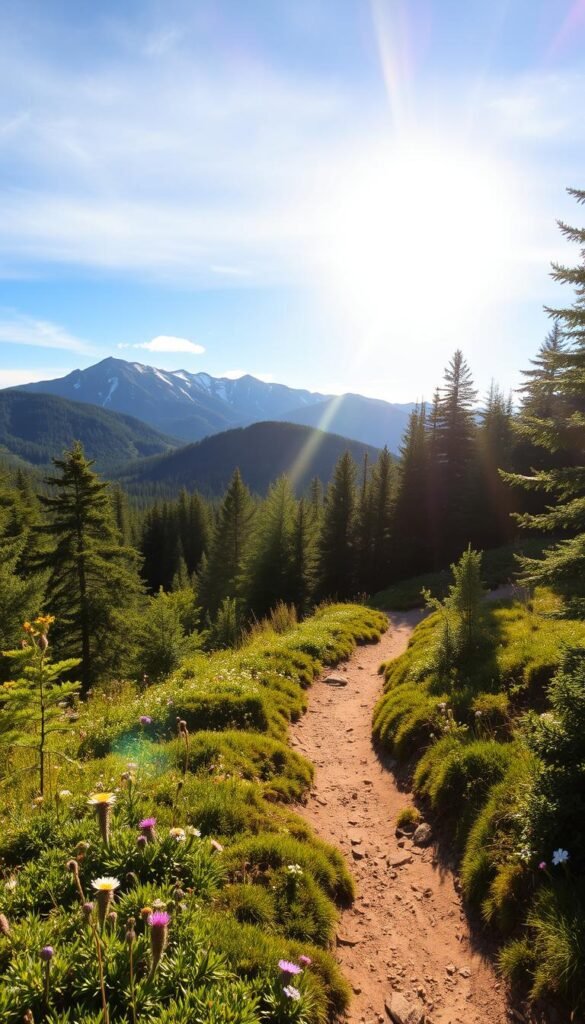
Accessibility for All Skill Levels
Vermont proves wilderness isn’t just for experts. Camel’s Hump’s ADA trail lets wheelchairs reach summit views, while toll roads wind to panoramic overlooks. Even the rugged Long Trail offers gentle sections—like the stretch near Massachusetts, where families picnic by brooks.
The Legacy of the Long Trail
America’s oldest long-distance path, the 272-mile Long Trail, stitches Vermont together like a rustic seam. Built in 1910, it taught me resilience—especially near Canada, where fog clings to spruce crowns. This trail birthed Vermont’s hiking culture, inspiring trails nationwide.
Whether you seek heart-pounding climbs or quiet woodland strolls, Vermont’s opportunities are endless. Every turn reveals new access to wonder—one step at a time.
Top 5 Must-Hike Trails in Vermont
Vermont’s trails weave through landscapes so diverse, they feel like multiple states in one. Whether you crave adrenaline-pumping climbs or serene ridgeline strolls, these five paths deliver unforgettable views, wildflower meadows, and bragging rights to Vermont’s highest peak. Here’s where to lace up your boots.
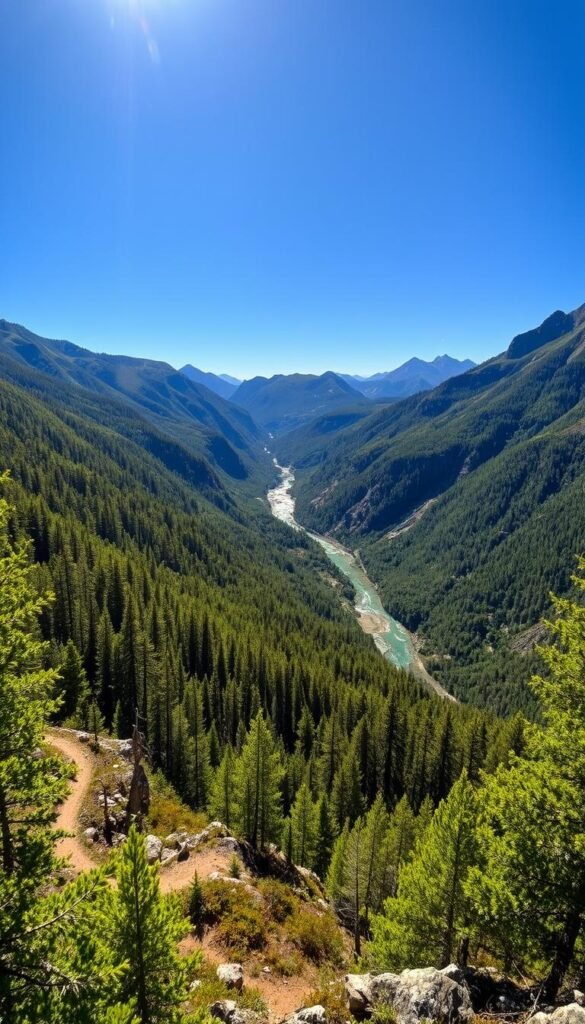
Mount Mansfield: Vermont’s Crown Jewel
At 4,393 feet, Mansfield isn’t just the state’s highest peak—it’s a test of grit. The Hell Brook Trail gains 2,555 feet in just 2.3 miles, with ladders bolted into sheer rock. I’ll never forget clutching my thermos on the windblown summit, watching clouds skate over Lake Champlain. Note: Leave pups at home—those ladders are human-only.
Camel’s Hump: Panoramic Perfection
This iconic dome serves up 360-degree summit views from an 8-mile ADA-accessible loop. Time your hike for sunset, when the light paints the Adirondacks gold. Pro tip: The Monroe Trail’s gentler grade makes it ideal for beginners.
Mount Abraham: Alpine Zone Magic
Abraham’s 4.1-mile trail winds through spruce forests before bursting into an alpine zone. Come July, the summit explodes with pink laurel blooms—a stark contrast to Mansfield’s ruggedness. I’ve spotted peregrine falcons riding thermals here.
Killington Peak: Ski Slopes to Skyline
Vermont’s second-tallest mountain rewards hikers with 1,604 feet of elevation gain and views down ski trails. The 4.1-mile loop feels easier than Mansfield, but microspikes are wise in shoulder seasons.
Mount Pisgah: Quebec on the Horizon
Overlooking Lake Willoughby, Pisgah’s 3.8-mile trail feels like coastal Maine—until you spot Quebec’s mountains. The North Trail’s rocky scramble leads to cliffs perfect for lunch with a view.
Each trail offers a unique lens on Vermont’s wild heart. Choose your challenge, pack your camera, and let the Green Mountains surprise you.
Family-Friendly Hikes for All Ages
Vermont’s family-friendly trails turn ordinary outings into mini-adventures. Whether it’s spotting eagles or splashing in waterfall pools, these routes pack big fun into short miles. Here’s where to take your crew for laughs, learning, and zero complaints.
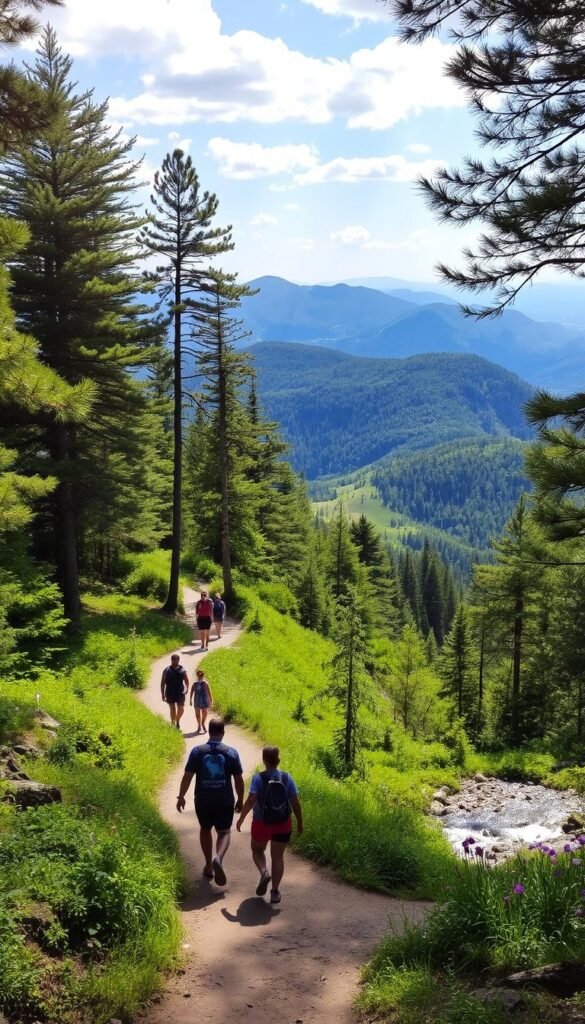
Burton Island State Park’s Lakeside Loops
The West Shore Trail (0.75 miles) skirts Lake Champlain, where bald eagles often glide overhead. I’ve watched kids gasp as ospreys dive for fish—bring binoculars! Prefer solitude? Woods Island’s 2-mile loop offers quiet coves perfect for skipping stones.
Niquette Bay’s Kid-Friendly Woodland Trails
Toddlers love the Allen Trail (15 minutes flat), where I’ve crafted scavenger hunts for pinecones and frog sounds. The Burns Trail (1 mile) winds through sun-dappled maples—ideal for summer picnics. Pro tip: Check the Green Mountain Club’s kid-friendly picks for more ideas.
Moss Glen Falls: Short Walk, Big Wow
A 0.25-mile path leads to an 85-foot waterfall with a heart-shaped rock formation. Kids adore the shallow wading pools (supervised, of course!). Nearby, Elmore State Park’s fire tower or Knight Point’s hidden coves make great picnic stops.
For budding naturalists, Gifford Woods’ interpretive trail teaches about old-growth forests. Every turn here sparks curiosity—whether it’s spotting salamanders or guessing tree ages. Pack snacks, patience, and a sense of wonder.
Winter Hiking: Trails and Safety Tips
Winter transforms Vermont’s trails into a sparkling wonderland—where crunching snow underfoot replaces summer’s dirt paths. I’ve watched Sterling Pond freeze into an ice-climber’s playground and followed snowshoe tracks along Mt. Ascutney’s closed parkway. This season demands new skills, but rewards with solitude and landscapes straight from a snow globe.
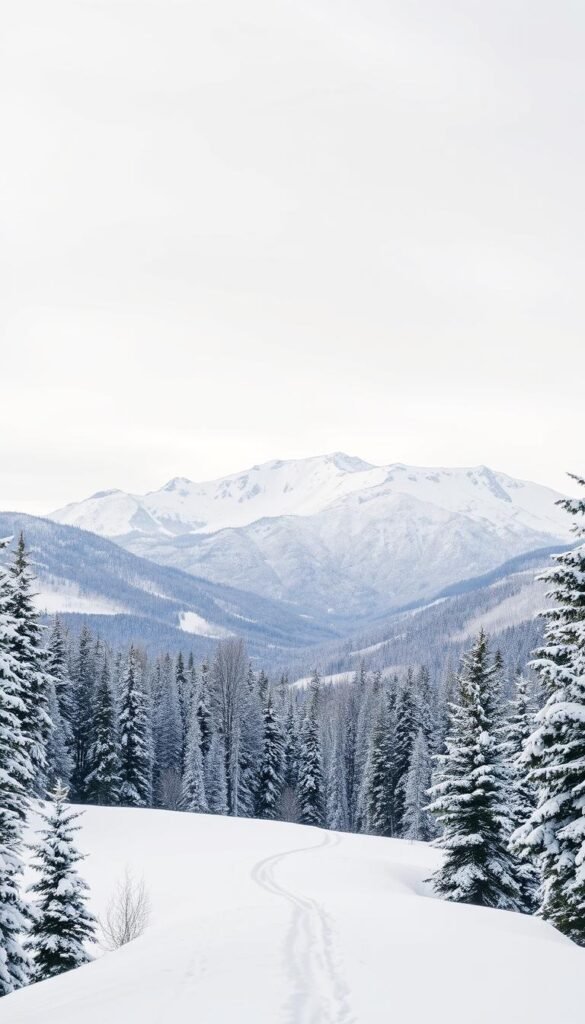
Snow-Covered Wonders
Smugglers’ Notch morphs from a summer hiking hub to a winter adrenaline zone. Last January, I clambered up its frozen waterfalls while ski tourers glided past. Nearby, Bingham Falls’ turquoise pools become ice sculptures—microspikes mandatory. For gentler adventures, try these routes:
| Trail | Winter Features | Gear Needed |
|---|---|---|
| Sterling Pond Trail | Ice climbing routes | Crampons, ice axe |
| Mt. Ascutney Parkway | Snowshoe loops | Snowshoes, poles |
| Elmore Fire Tower | Frosted summit views | Microspikes |
Gear That Saves the Day
My first winter hike taught me hard lessons—like how standard water bladders freeze solid. Now I swear by insulated bottles and these essentials:
- Microspikes for icy trails (Kahtoola’s saved me on six summits)
- Balaclava instead of scarves—no frozen fabric sticking to your face
- Hand warmers inside glove liners (trust me)
Safety on Shifting Terrain
December days vanish fast—I plan turnarounds by 2 PM. Black ice hides under powder, especially on ski trail connectors. Three rules keep me safe:
- Test icy patches with poles first
- Walk like a penguin—short steps, flat feet
- Check road closures (Rt. 108 through Smugglers’ Notch shuts November-April)
Nothing beats watching the sun set behind snow-dusted firs from Elmore’s fire tower. Just pack layers, common sense, and that childlike wonder—winter here is magic with teeth.
Vermont’s Waterfall Hikes You Can’t Miss
Vermont’s waterfalls turn ordinary hikes into sensory adventures—where mist kisses your face and thunderous cascades drown out thoughts. These trails aren’t just paths; they’re portals to hidden worlds of turquoise pools and fern-draped cliffs. I’ve waded through icy streams, slipped on algae-slicked rocks (lesson learned!), and gasped at sunlight fracturing through falls like Lye Brook’s 125-foot curtain.
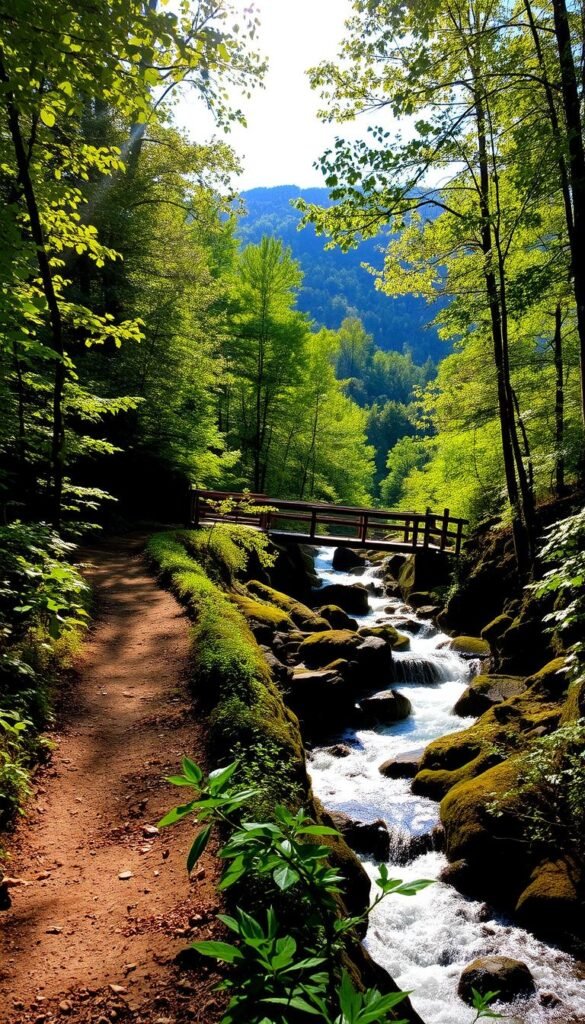
Bingham Falls: Turquoise Pools and Cascades
A 0.5-mile hike drops you into Bingham’s intimate gorge, where water carves marble-smooth bowls. Swim here in summer—if you brave the chill. Last July, I watched daredevils leap from lower cliffs (not recommended!). The views? Unreal. Morning light turns the falls into liquid gold.
Lye Brook Falls: A Hidden 125-Foot Cascade
This 4.5-mile trek through old-growth forest rewards with wilderness solitude. The falls explode from a mossy cliff—bring a wide-angle lens. Pro tip: Hike after rain for maximum roar. I’ve spotted rare ferns here, like the delicate northern oak fern.
Hamilton Falls: Moderate Trek, Rewarding Payoff
Jamaica State Park’s 6-mile round trip climbs past smaller cascades to Hamilton’s 125-foot drop. Pack lunch—the flat rocks at the base are perfect for picnics. Note: Swimming is permitted but check water levels; spring currents are fierce.
| Waterfall | Distance (miles) | Difficulty Level | Best Time to Visit |
|---|---|---|---|
| Bingham Falls | 0.5 | Easy | Morning (for photos) |
| Lye Brook Falls | 4.5 | Moderate | Afternoon (lighting) |
| Hamilton Falls | 6.0 | Moderate | Midday (warmest swim) |
Photography Tip: Moss Glen Falls glows at dawn, while Buttermilk Falls’ cascades shine post-noon. And yes, Texas Falls soaked my boots last fall—those rocks are slicker than they look!
For off-the-radar gems, Warren Falls’ natural waterslides deliver belly laughs (and maybe a bruise). Every waterfall here has a story. Which one will you chase first?
Guide to Hiking in Vermont’s State Parks
Vermont’s state parks are like outdoor classrooms—each one teaches a different lesson in wilderness wonder. Some test your grit with rocky ascents, while others reward with lakeside lounging. I’ve scrambled up frosty ridges at dawn and traced the Long Trail’s historic footsteps—all within these protected havens.
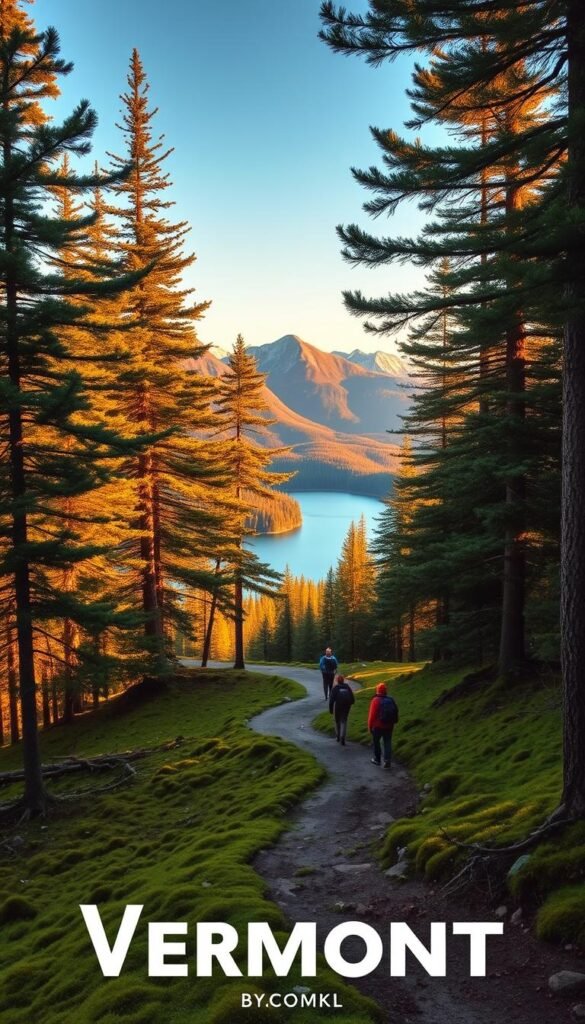
Underhill State Park: Mansfield’s Playground
Four trails claw up Mount Mansfield from here, but Sunset Ridge (3.2 miles) is my favorite. The exposed ridgeline feels like walking a dragon’s spine—especially when fog swallows the Green Mountain National Forest below. Pro tip: Start early to avoid afternoon thunderstorms.
Gifford Woods: Where Giants Meet
At this park, the Long Trail shakes hands with the Appalachian Trail. I’ve lingered at the junction, watching thru-hikers swap stories. Navigate carefully—the trails intertwine like old friends. Sugar maples tower overhead, their leaves blazing gold by October.
Elmore State Park: Fire Tower Majesty
Climb the 1930s fire tower at dawn, and you’ll understand why locals guard this secret. The 360-degree views outshine nearby peaks, with Lake Elmore glittering like spilled mercury. Last May, I spotted a moose grazing in the mist—binoculars are a must.
| Park | Unique Feature | Don’t Miss |
|---|---|---|
| Groton State Forest | Glacial potholes | Kayaking on Boulder Beach |
| Bomoseen State Park | Slate history trail | Sunset at Half Moon Pond |
For wild encounters, Smugglers’ Notch hosts nesting peregrine falcons—I’ve watched fledglings take first flights from the cliffs. Whether you seek solitude or family picnics, Vermont’s state parks offer endless opportunities. Just remember: pack out what you pack in.
Preparing for Your Vermont Hiking Adventure
Preparation separates memorable hikes from miserable ones in Vermont’s wild terrain. I’ve watched unprepared hikers retreat from Camel’s Hump, defeated by June’s black flies or October’s surprise ice. But with the right gear and know-how, every trail becomes an opportunity for wonder.
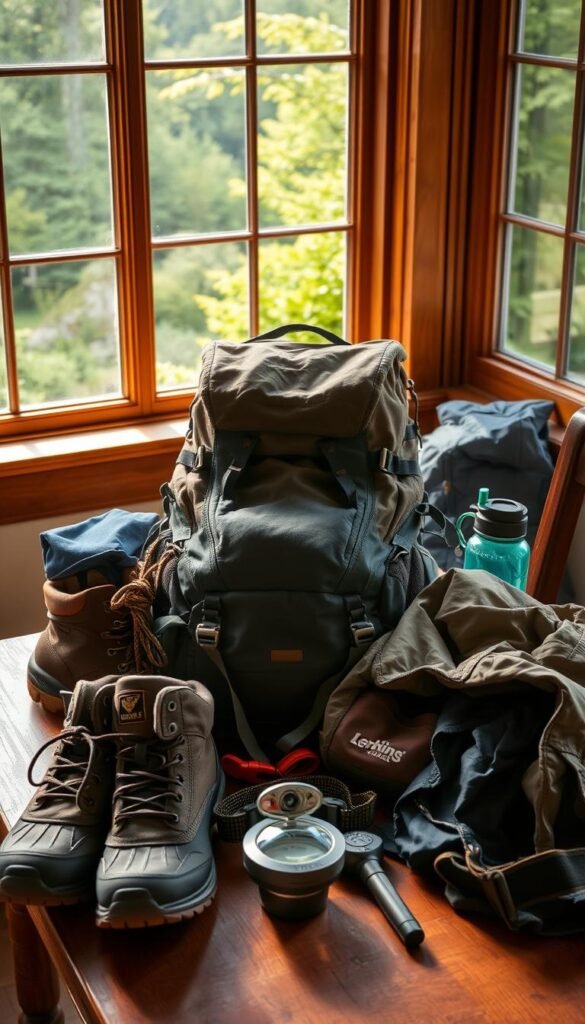
What to Pack: Seasonal Survival Kits
Summer demands 2L of water per person—I refill at streams using a Sawyer filter. Winter? An emergency bivvy saved me near Sterling Pond when whiteout winds hit. Here’s my non-negotiable list:
- June: Bug jacket (trust me, deer flies bite through shirts)
- October: Microspikes for mud that glues boots to the trail
- Winter: Hand warmers inside mittens—frostnip isn’t fun
Leave No Trace: Vermont’s Wild Rules
Above treeline, stepping off rocks kills fragile alpine plants. I pack WAG bags for waste—no one wants to stumble on buried TP. Fires? Only in designated rings with deadwood, per multi-day excursion guidelines.
Wildlife Wisdom: Moose and More
At Ricker Pond, a cow moose charged when I closed within 50 feet. Now I keep 75 feet minimum—and know trees are poor shields. Store food in bear canisters; I’ve seen raccoons unzip packs overnight.
Post-hike, celebrate safely. Lawson’s Finest Sip of Sunshine pairs with trail stories, while Ben & Jerry’s fixes any day gone sideways. Just remember: cotton kills, but preparedness? That’s your best hiking partner.
Hidden Gems: Lesser-Known Vermont Trails
Beyond Vermont’s famous peaks lie quiet trails where nature whispers its secrets. I’ve watched sunsets paint Antone Mountain’s pastures gold and tiptoed across Peacham Bog’s floating boardwalks. These overlooked wonders offer solitude and surprises—if you know where to look.
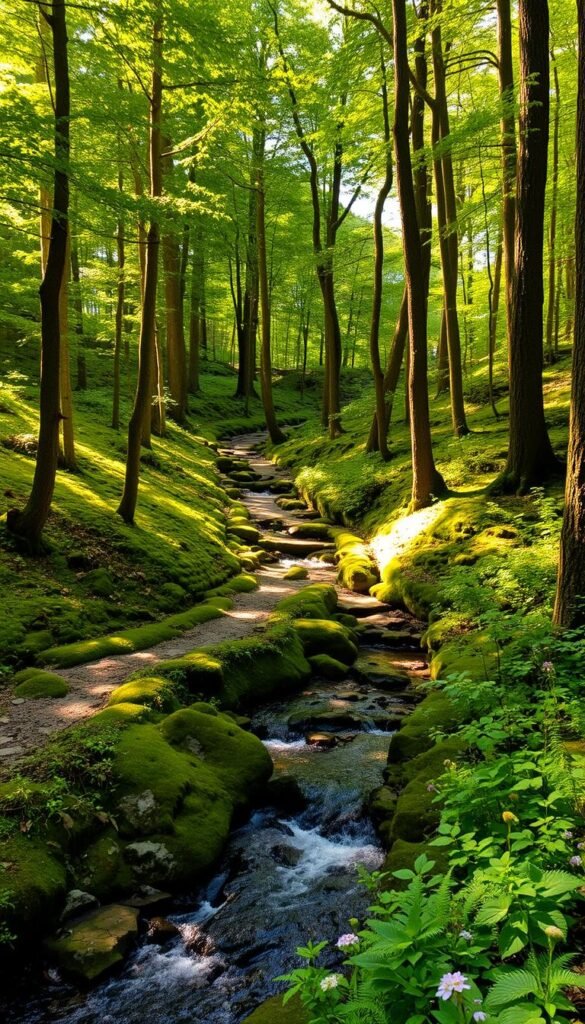
White Rocks Ice Beds: Short Hike, Big Views
The 1.6-mile hike to White Rocks delivers panoramic foliage views with minimal effort. Watch for often-missed blue blazes—the trail markers blend into lichen-covered boulders. Last October, I found the perfect lunch spot atop ancient ice beds, where glacial erratics form natural benches.
Antone Mountain: Farmland and Forest Combo
Merck Forest’s 5.1-mile loop climbs through maple groves to open pastures. Time your hike for golden hour, when the Adirondacks glow across the valley. Pro tip: Tuesday mornings offer total solitude—I’ve had the summit sheep pastures all to myself.
Peacham Bog: Unique Wetland Ecosystem
A boardwalk winds through this carnivorous plant paradise. Pitcher plants silently trap insects while sundews glisten like dewdrops. I’ve spent hours photographing orchids here—just don’t step off the path. The bog’s delicate mat can collapse underfoot.
- Navigation: Beaver Meadow’s trails stay quiet all week, unlike popular Bingham Falls
- Local lore: Smugglers’ Notch earned its name during Prohibition—whiskey barrels once rolled through these gaps
- Best season: September for White Rocks’ foliage, July for Peacham’s blooms
These trails prove Vermont’s magic isn’t just in its postcard peaks. Sometimes, the most unforgettable moments happen where few think to wander.
Conclusion: Your Vermont Hiking Journey Starts Here
The Green Mountains don’t just invite exploration—they ignite a lifelong love for the trails. Whether you’re navigating ADA-friendly boardwalks or scrambling up Mansfield’s rocky spine, Vermont’s hiking scene meets you where you are.
Start small at Moss Glen Falls, then chase bigger summits. I’ve learned: progression beats overexertion. For a magical twist, join the Green Mountain Club’s full moon hikes—their lantern-lit trails redefine night adventure.
Four seasons, endless experience. Spring wildflowers, autumn’s fiery maples, winter’s silent snowscapes—each visit writes a new story. Where will your boots wander first? Tag #VTFootprints to share the journey.

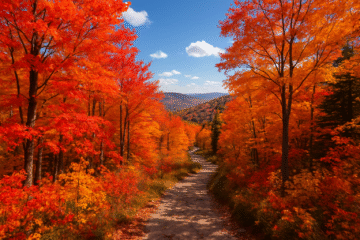
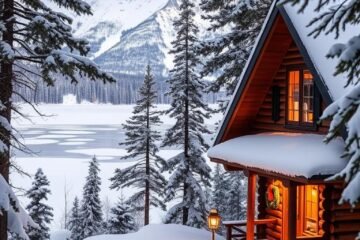
0 Comments